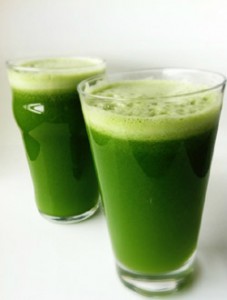
More evidence that low-calorie sweeteners are bad for your health
Studies show that artificial sweeteners can raise the risk of hypertension, metabolic syndrome, type 2 diabetes and heart disease, including stroke.

Raw fruit, herbs and vegetables are packed with antioxidants, vitamins and nutrients to boost health and well-being. Juicing harness the raw vitality of raw foods, enabling your body to absorb a greater amount of nutrients than from whole foods.
But what is the best juice to choose for optimum health?
Fruit juices – even freshly squeezed ones – are tasty, and can be high in antioxidants and other nutrients, but they can also be high in sugar. Veggie juices made from carrots and beetroot also taste good, but are as high in sugar as most fruit-based juices. If your diet is otherwise healthy and low in added sugar, this is not such a big concern.
But if you are looking to start juicing to aid detox, vegetable juices are the best choice. If you are a veggie juice novice, mild detox drinks can be made from greens such as celery, fennel and cucumber. This is a good way to introduce yourself to the taste and effects of veggie juices if you’ve never had them before.
Remember also that juices exist on a continuum of blended fruits and vegetables that also includes smoothies, savoury broths, soups and even fresh salsas, as well as both sweet and savoury teas. So if the idea of cold kale juice just doesn’t excite you, try having it gently warmed as a soup or broth instead.
Go dark green
That said, it is the dark-green leafy, though sometimes less palatable, vegetable juices that will benefit you the most. Partly because of their chlorophyll content and partly because of their high antioxidant content, green vegetable juices are more effective at eliminating toxic waste compounds out of the body, benefit from addition of herbs and spices known to enhance the detoxing process.
Once you get used to the milder juices, you can introduce more powerful mixtures made from lettuces such as red leaf, green leaf, romaine and endive as well as other greens like escarole, spinach, cabbage, Chinese cabbage and bok choi.
Adding herbs like parsley and cilantro (coriander) to the juices will add flavour as well as further detox benefits. Start with small amounts and monitor your body’s responses.
Juicing is also a great way to help us break down the often false barriers between culinary and medicinal herbs, by bringing herbs like lemon balm and dandelion leaves into our everyday diet.
Other types of greens you can use (sparingly because they are very bitter) include kale, collard greens, dandelion greens and mustard greens.
Simple steps
Juicing is simple but there are a few things to remember:
Juicing shouldn’t be a substitute for eating whole fruits and vegetables. There are other essentials such as fibre, which are lost when we juice. But if you are having a juice fast, or detoxing, or even recovering from illness, juicing is a superb way of getting concentrated nutrients in an easily assimilated form.
You can use your own imagination to make blends that suit your palate, but below are two recipes to get you started:
Oregano & Dandelion
This green power blend is rich in chlorophyll, which helps support the digestive tract and promote healthy intestinal function. This action is supported by both oregano and basil. Dandelion leaves, spinach and courgette stimulate the kidney function, carrot nourishes the liver. All of the ingredients have cleansing and rejuvenating action.
Ingredients
Method
1 Wash and drip dry your vegetables, and herbs.
2 Leave the skin on carrots and courgette; chop them if necessary to ensure smooth flow through the feeding hopper of your juicer.
3 Put all ingredients through the juicer and drink immediately.
Wheatgrass & lemon balm
This is a true ‘cool’ drink, purifying the body and relaxing the mind. Wheat grass is traditional ingredient for serious detoxing and rejuvenating regimes, it is well worth growing your own – the web abounds with suppliers of organic wheat grass and wheat grass seed suppliers.
Dandelion supports the elimination through increased urination and Fennel through stimulating the lung function and clearing the phlegm. Thread like Fennel leaves also enhance the sweet flavour provided by the wheat grass. Lemon Balm and perfumed rose petals relax the mind sharpen ability to think and soothe the heart.
Ingredients
Method
1 Use scissors to cut the wheatgrass blades from the tray just above the planting surface.
2 Remove the petals from the rose heads.
3 Wash and drip-dry the herbs.
4 Cut of a quarter of a small size lemon, keeping the skin on.
5 Put all ingredients through the juicer and drink immediately.

Please subscribe me to your newsletter mailing list. I have read the
privacy statement